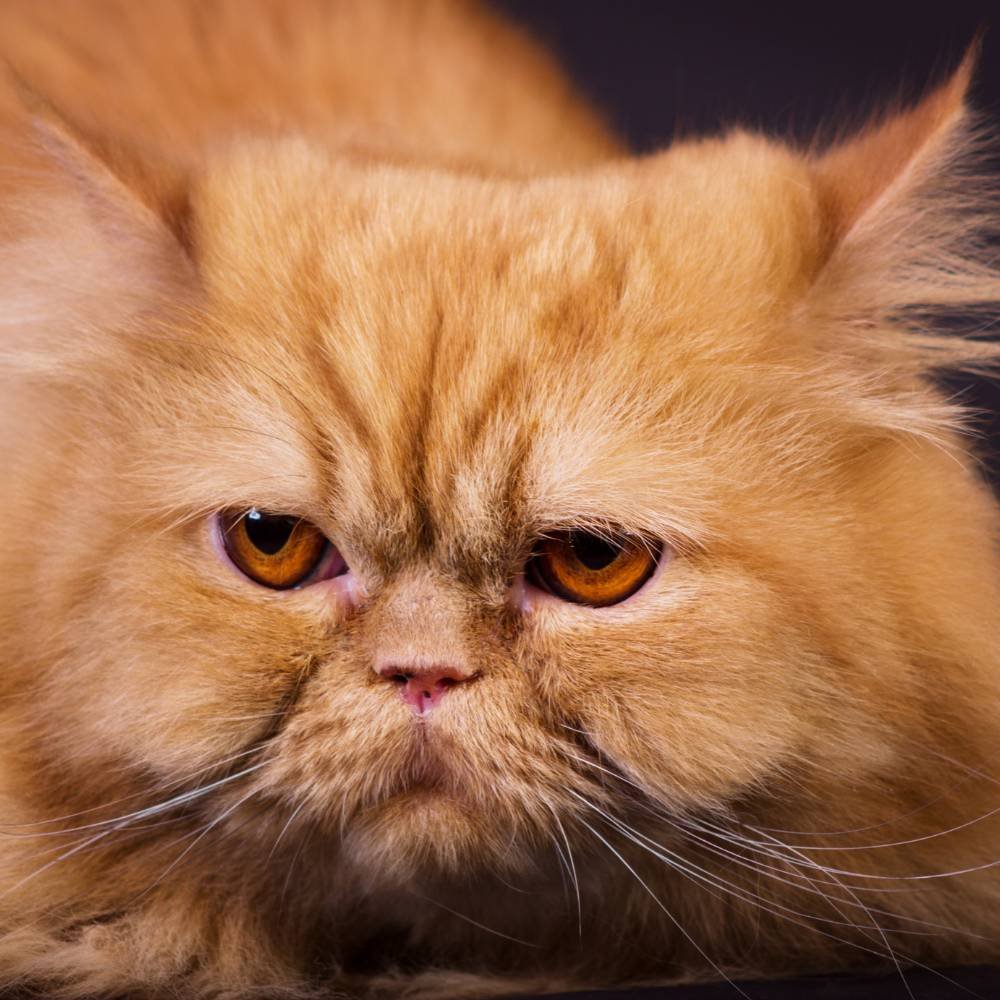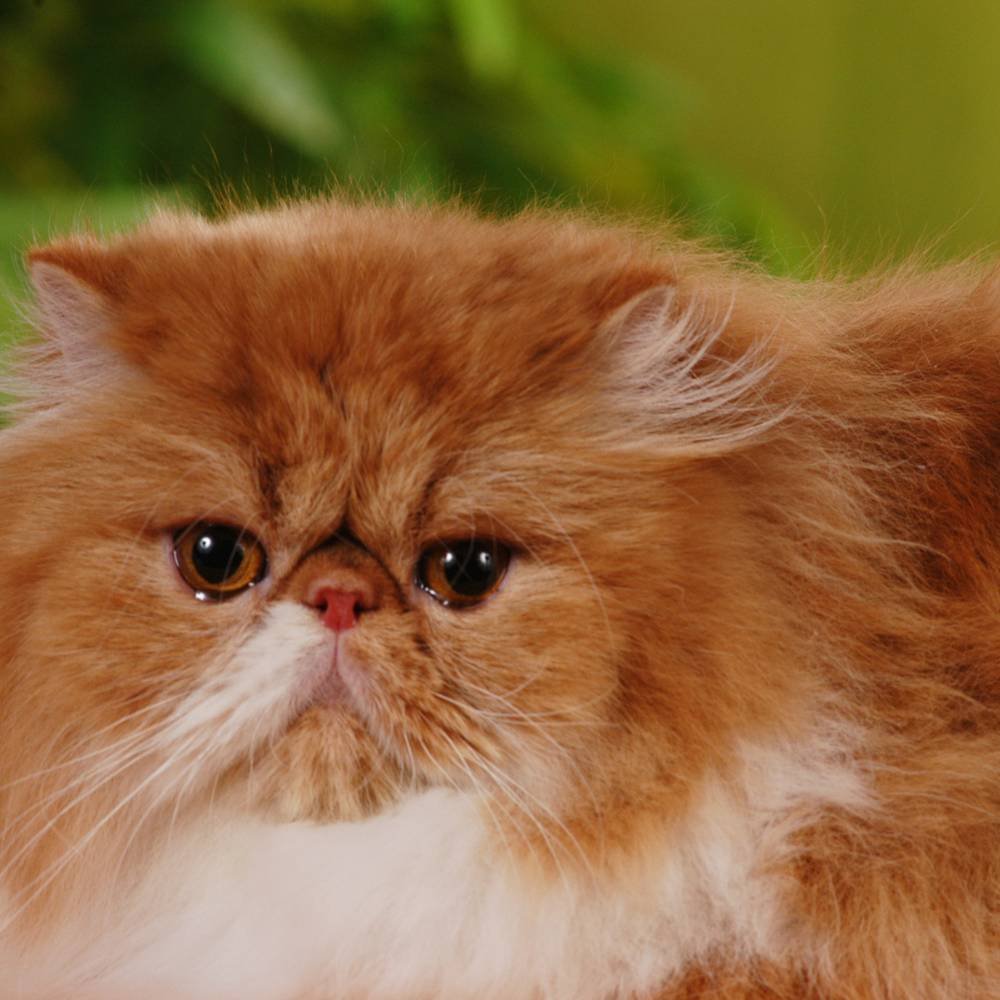
Orange Persian cats have the same personality traits, the same luxurious coats, the same health issues, and need the same care as other Persian cats. The most significant difference between Orange Persian cats and others is that they are always tabby. Orange Persians and other orange cats always have tabby markings because of how the tabby gene and orange or red, as breeders call it, gene, work together.
Orange is a common name for what breeders and science types call red. These Persian cats are also called ginger and marmalade because they are similar to these items in color.
There are a variety of orange fur types. Orange cats are born orange because the red gene is one of the sex-linked colors. The other is black. We’ll go further into why this is later in the article.
Here are some definitions that may be helpful.
Phaeomelanin – A melanin pigment produced in the presence of the amino acid cysteine, adding red or yellow color to skin, hair, feathers, etc.
Melanin – a class of insoluble pigments found in all forms of animal life that account for the dark color of skin, hair, fur, scales, feathers, etc.
Cysteine – a crystalline amino acid, C3H7O2NS, a component of nearly all proteins.
Homozygote – an organism with identical pairs of genes concerning any given pair of hereditary characters, and therefore breeding true for that character.
Heterozygote – a person, animal, or other organism with a pair of differing alleles, one dominant and one recessive, of a particular gene.
Epistatic Gene – Epistasis is when one gene is affected by one or more independently inherited genes. In other words, the red Persian cat can also be cream. Another example is having an orange and white bi-color Persian cat. In this instance, the orange gene is modified by the white masking, tabby, or diluted red genes.

How We Get An Orange Persian
The red gene on the X chromosome determines if a cat will be orange or any of the variations. The red gene encodes a pigment produced in the presence of the amino acid cysteine, adding red or yellow color to skin, hair, feathers, etc. The allele O codes for orange tones, and the allele o codes for non-orange tones like black.
Since males only have one X chromosome, they can be only orange or black, not both. So if they carry the O allele, they will be orange or a variation; if they carry the o allele, they will be black or an interpretation.
Females have two X chromosomes, meaning they can carry two gene alleles. Dominant homozygotes OO will make them red-toned. However, recessive homozygotes oo won’t have red at all. Heterozygotes carry one dominant O and one recessive o, which makes them tortoiseshell. Tortoiseshell is a mix of red and black.

Orange Persian Cat Coats
When you think of Orange Persian cats, you probably envision a big puff of stripey orange with copper or orange eyes. However, other orange coats may not be what you expect. The orange gene can sometimes have mutations that allow another color gene to show.
Diluted Black Persians
You can get shades of lighter colors in orange Persian cats with diluted genes. For example, you can get a cream Persian. On top of that, you can end up with a dilute tortoiseshell if a female has a dominant black and red allele paired with the dilute gene. These cats are grey and cream instead of the standard black and red.
Bi-Color Orange Persians
It takes an orange Persian cat to get an orange Persian. Add the white masking gene to create an orange and white bi-color Persian. Orange Persian cats come in a variety of bicolor patterns. These orange Persian cats are also called piebald. These cats have any white quantity on them but aren’t entirely orange. The white spots can be limited to a locket on the chest or just some white mittens, up to an almost wholly white cat except for its ears and tail.
True or Standard Bicolor Pattern
A coat with equal amounts of solid or tabby color and white markings is described as having a genuine or typical bicolor pattern. Standard bicolor patterns appear when the color patches are distinct and divided with white markings. The body should be colored in at least half, while the remaining portions of the coat should be white.
Mask-&-Mantle Pattern
The colored fur covers the eyes, ears, and top of the head for the mask, and the mantle occurs when the color reaches down over the back, resembling a blanket draped over them. The white markings appear on the face, underside, shoulders, neck, and legs. The white markings may separate the mask-and-mantle blend, or the mixture could remain solid. The mantle can extend over the back and down the tail.
Cap-&-Saddle Pattern
Similar to the mask-and-mantle pattern, the cap-and-saddle pattern has a smaller colored mask. It covers a cat’s top of the head rather than a mask. In addition to being smaller, the mantle pattern now resembles a saddle rather than a blanket. The tail may be white or have a single color.
Harlequin Pattern
A harlequin-patterned black Persian cat is characterized by a primarily white coat, typically with an orange or cream tail, and a body with sporadic white areas. At least a quarter of the coat, but not more than half, is covered in patches. These specks are divided, and white surrounds them.
A harlequin cat with black patches may also be called a moo or cow cat. They look like milk cows. But even tabby, calico, or tortoiseshell cats can have these spots in any hue. Harlequin cats are also known as magpie cats at times.
Van Pattern
When the color is preserved on the head, usually just between the ears, it is said to have a van pattern. The tail likewise has a uniform hue. The coat’s body is all white. The Turkish Van cat breed, which has a similar pattern, is named after this pattern. From a distance, these cats may appear to be completely white. The color can occasionally be a subtle cream or orange that blends in with the white coat. Van-patterned calico cats are sometimes seen. They have a white coat with orange, black, cream, or tan coloration.
Mitted
Mitted cats, sometimes called gloved, only have white on their paws as if they were wearing white socks.
Tortoiseshell Pattern
Cats with the tortoiseshell pattern have a mixture of orange and black tabby fur. The hues can mix or show up as black-and-orange tabby coloring patches. Despite having what seems to be two colors, they aren’t thought of as bicolor cats because they frequently lack white fur. Calico cats are tortoiseshell cats that have some white markings.
Pointed Pattern
Cats with a pointed pattern have darker feet and faces than the rest of their bodies. That frequently happens to Siamese cats. This coat pattern is also typical of seal-point breeds. The genetics of each cat decide how dark the points will go. Thus, these aren’t bicolor cats.

Tabby Patterns
Orange Persian cats are tabby, for the most part. No matter the breed, most orange cats carry the tabby gene, and those tabby markings are usually visible.
Classic Tabby
The traditional tabby has a strong, swirling pattern down their sides. In some places, this tabby is called a blotched tabby. The classic tabby’s body is covered in circular smudges resembling a bullseye.
Mackerel Tabby
A mackerel tabby has parallel, fine stripes down her flanks that are referred to by some as a tiger cat. Vertically aligned, thin lines can be seen on the body’s sides. The stripes should be continuous and equally spaced. The name mackerel describes them because they branch out from a single line that runs down the top of the cat’s back down the spine.
Patched Tabby
A tortoiseshell cat with the tabby gene showing is frequently called a torbie. Any one of the aforementioned tabby patterns can be seen in patched tabbies. Usually, the legs and head are where the markings are most noticeable.
Spotted Tabby
The flanks of these cats are covered in spots. These patches can be big or little and occasionally resemble shattered mackerel stripes. They might be rosette-shaped, spherical, or oval. A broken-patterned mackerel tabby frequently resembles a spotted tabby.
Ticked Tabby
A ticked tabby cat, also known as an Abyssinian tabby or an Agouti tabby, lacks the typical spots or stripes on their body and may not initially appear to be one. However, this coat pattern has agouti hairs across the body and tabby markings on the face, much like all tabbies.
How do agouti hairs work? The individual hairs, known as agouti hairs, can be seen striped with alternating light and dark bands if you examine the lighter areas of a tabby’s coat closely. Although it also exists in mixed breeds, the ticking pattern is most noticeable in Abyssinians.

Conclusion
There you have it—some interesting facts about orange Persian cats. While the orange Persian cat is just like any other color of Persian cat, they have differences in how their fur color is produced. We hope you learned something about orange Persian cats and enjoyed this article. Did this help you understand why your orange Persian is orange or why they may have the pattern or markings they do? Now you have an answer. If you liked our article, please leave any questions or comments below.